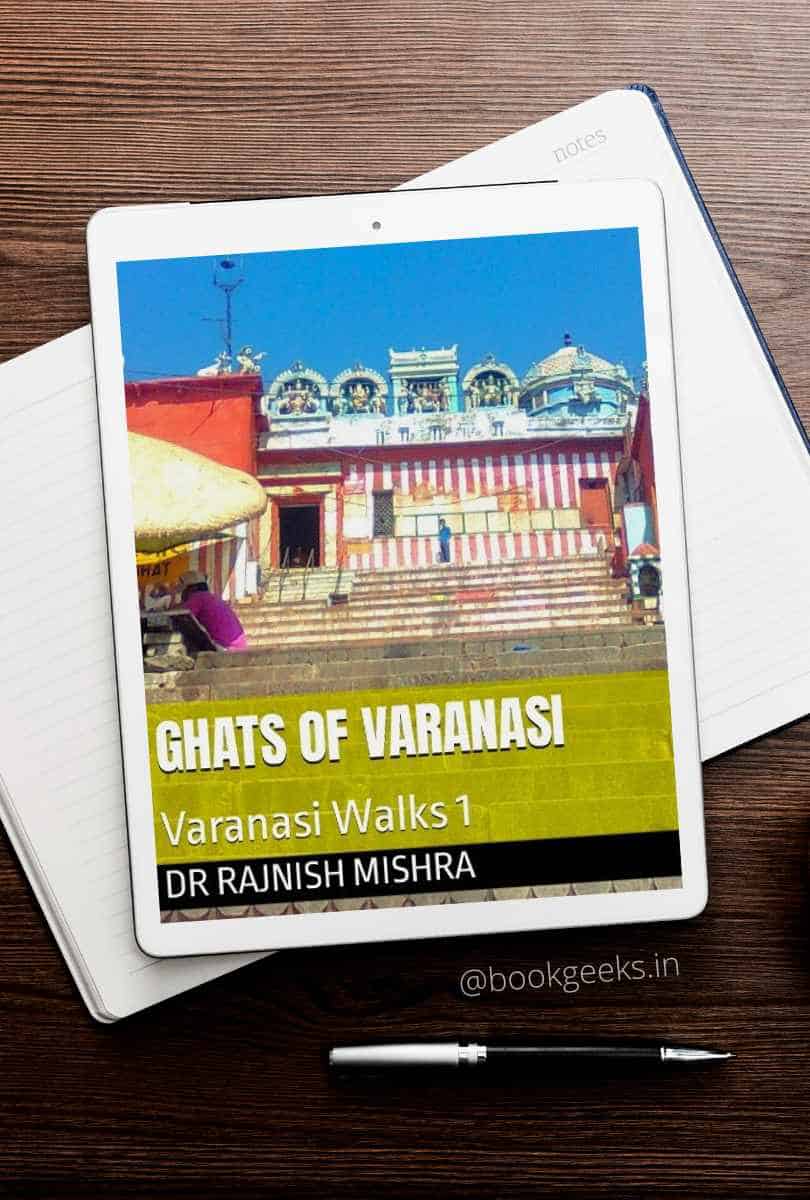SUBJECT: 4/5 RESEARCH: 3.5/5 WRITING: 3/5 VALUE: 3.5/5
“Modern day Varanasi has retained its “most sacred” status, yet has become much more than just that. People go there in search of salvation, fun, or nothing in particular. Moksha or salvation is not a very popular goal at this age of erosion of faith and its seekers are few. Then there are some who are satisfied with whatever spiritual solace the city has to offer.”
– Dr. Rajnish Mishra, Ghats of Varanasi: Varanasi Walks 1
It was when I was planning for my trip to Varanasi that I first chanced upon this book by Dr. Rajnish Mishra. I was tired of googling online and coming across the same touristy places in the list of ‘things to do in Varanasi’ and even when I changed my search to ‘temples of Varanasi’ the results were hardly satisfactory. It was then I decided to go back to my old friend Kindle and looked for books that delved deeper into the history, Itihaas, and bhakti bhava of Varanasi.
What is the book all about?
The book is part 1 of a series called the Varanasi Walks. Ghats of Varanasi: Varanasi Walks 1 does not cover any temples or lanes but only talks about the various ghats. Even then the author makes it abundantly clear that the book does not cover the ghats extensively and exhaustively, for the subject is so vast that it would entail writing multiple books on ghats alone.
That being said, the book covers countable entities but with the added bonus of the personal experiences of the author captured within its informative pages.
A little about the author
The author is a blogger who has been meticulously documenting Kashi/Varanasi since as early as 2011. Readers interested in knowing more can look for information about the author and his beloved city at rajnishmishravns.wordpress.com.
A little more on the subject
Rows after rows of stone steps rising from the mighty Ganga and rows after rows of stone falling into the same – this is the quintessential picture of the city that comes to mind when one thinks about Varanasi. This is also what the author quite aptly refers to as the ghatscape.
This ghatscape covered in the book has been divided into seven sections, with each section dedicated to its most famous ghat – Assi, Kedar, Dashashwamedh, Manikarnika, Panchganga, Trilochan, and Adikeshav. The ghats covered in the book follow the course from South to North.
Apart from the main ghats, the book also covers many interesting facts, and histories of other popular ghats such as Chet Singh ghat, Nishadraj ghat, Panchkot ghat, Bhadaini ghat, Tulsi ghat, etc.
While a large part of the book talks about the more popular ghats, there are sections dedicated to places that aren’t as teeming with touristy and religious crowds as much as their other counterparts are.
Further, the book also talks about some famous local people and their different endeavors in keeping the city alive and timeless.
What did I like?
I loved how the book gives a short yet insightful look into the various ghats of Varanasi not just from a curious tourist’s point of view, but from the point of view of those who come seeking the divine and the ancient itihaasa of the city.
When I sat down to research my trip to Varanasi, there was hardly any other information available online apart from what the regular tourists seek. However, this book informed me about the many hidden gems that talk of the itihasa of the place and its significance in our Hindu dharma.
What could have been better?
I read the Kindle eBook on my laptop, and throughout the book, there was space provided for multiple pictures. However, all of these pictures were missing, and in their stead was an ‘error-downloading-image’ icon. So far, in more than half a decade of Kindle reading, it has never happened to me. In this book, thus, it felt like a rude shock.
Check out Ghats of Varanasi: Varanasi Walks 1 on amazon.in
